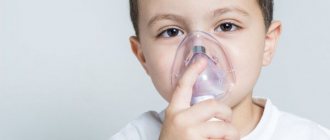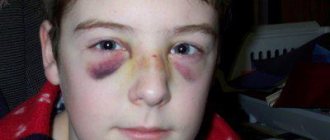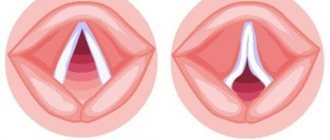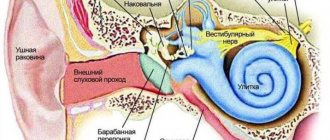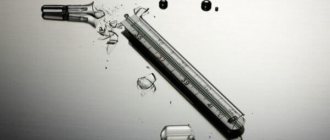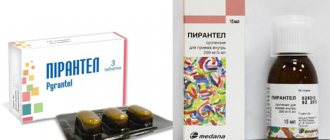Every parent has experienced a child suffering various injuries. Should I immediately rush to the doctors, call an ambulance, or say: “It will heal on its own”? In order not to go to extremes or panic, to soberly assess the situation and help the child, minimal medical knowledge is needed.
Injuries in childhood are inevitable. Despite all the parents’ tricks to secure the house by installing ingenious locks on drawers and caps on sharp corners of furniture, children manage to receive “battle wounds.” Well, when a child gets older, it is completely impossible to avoid falls and bruises. Slides, carousels, bicycles, scooters entail abrasions and bruises. You shouldn’t worry about every scratch, but you need to know about first aid rules for various types of injuries. Today we’ll talk about head and face injuries.
The child hit his head
They are open and closed. With open wounds, the soft tissue and bones of the skull are damaged, which can lead to inflammation in the membranes and substance of the brain. In this situation, it is necessary to immediately call an ambulance and hospitalize the child. With closed injuries, soft tissues and bones remain intact (minor abrasions and scratches do not count), but swelling appears. You can relieve swelling by applying an ice pack or a towel soaked in cold water to the injury site for 5-10 minutes.
Alarming symptoms of a head injury that should alert parents are drowsiness, lack of appetite, nausea, and headache. As a rule, these are signs of neurological problems that have arisen, indicating a concussion or hemorrhage. Therefore, even with a minor injury, it is advisable to show the baby to a specialist within 24–48 hours after the fall and undergo a full examination, including ultrasound, MRI (magnetic resonance imaging), CT (computed tomography), which will allow us to determine the extent of the damage and develop adequate treatment tactics.
Cause
Children grow, their mobility increases. At any age, you are not immune from possible nose injury. There can be many reasons for this situation:
- A child may hit himself during play, for example, when he opens the lid of a jar or removes a ring from a pyramid, which will be difficult to move, and then suddenly comes off and hits the baby’s nose.
- A toddler can get hit on the nose with a ball while playing outside.
- The baby may fall carelessly and hit his nose on the ground or a piece of furniture.
- Sometimes the little one is standing in the wrong place, and someone unexpectedly opens the door.
It is possible that the blow could cause a broken nose. That is why, when a child experiences such an injury, it is necessary to immediately take action and consult a doctor, because untimely treatment can have an adverse effect on the development and health of the child.
Luckily my son didn't hit his nose. One day an incident happened before my eyes. A five-year-old child who was with us on the playground decided to play catch-up with other children. He tripped and carelessly fell, tore off his knees, palms, but most of all, his nose, which he so carelessly hit, suffered. Of course, there were a lot of tears, as well as blood. His mother immediately called an ambulance. While the car was driving, she tried to calm the child, tilted his head slightly forward to stop the bleeding. There was no time to go home, since they lived two blocks from this site. It was lucky that the car arrived in just five minutes, the child was given first aid and taken to a traumatologist. There was no fracture. The doctor prescribed ointment and physiotherapy, which they attended for five days. The last traces of the injury disappeared after three weeks. At first, the boy did not run, even when other children called him, this happened for about three months. Apparently he remembered how he fell and was afraid of re-injury. And then, as if nothing had happened, he began to actively play again.
The child broke his lip
One of the most common injuries is a lip injury.
As a result of an unsuccessful fall or blow, a hematoma forms, the lip swells, hurts, and bleeds. It is necessary to wash the wound as soon as possible with plenty of water, apply ice to stop the bleeding and press a piece of sterile gauze or a cotton handkerchief to the lip for a few minutes. When the wound is bleeding heavily, it is worth applying 2-3 layers of gauze, securing them with a plaster or elastic bandage. Such a compress will put light pressure on the wound and thereby help stop the bleeding. For 3-4 days, you should treat your lip with a cotton swab dipped in a solution of furatsilin, fucorcin or chamomile decoction, and spray it with miramistin for disinfection. In case of a serious injury, when the lip is severely cut, it is better to immediately take the child to the hospital, where the surgeon will examine the baby and, if necessary, apply a stitch. Otherwise, the wound will heal, but in its place an unaesthetic thickening will form, which can only be eliminated with the help of plastic surgery.
Eyebrow cut. How to help with an injury?
When an eyebrow is cut, parents are often frightened by heavy bleeding, accompanied by swelling and hematomas. A cold compress will help relieve swelling, and the wound should be washed with hydrogen peroxide to eliminate the risk of infection and stop bleeding. When the cut is small, you can get by with brilliant green and a bactericidal patch. But in the case of a large abrasion, the help of a surgeon is required to apply a suture. In addition, if the wound is heavily contaminated (for example, the eyebrow was cut by a blow from a stone or due to a fall from a bicycle), it is necessary to determine whether it is worth getting a tetanus vaccination.
Diagnostics
Since, in addition to the usual bruise, the baby may have a fracture, the impact could damage the eyes or head, it is important to exclude all kinds of injuries. Diagnostics include the following:
- The doctor will examine the external condition of the child, the shape of the nose, and ask about accompanying symptoms.
- Radiography is important. An X-ray is taken in a lateral projection - this is necessary to exclude a fracture and check for displacement, and in some cases, for the presence of a foreign body.
It is worth noting that young children may have difficulty making a diagnosis using this procedure, since in toddlers the facial bones are too thin and do not show up well in the image. In addition, the day of dental germs and teeth is superimposed on them.
Nose injuries. What to do if a child breaks his nose?
Until the age of 7, nasal cartilage is very soft and does not really break down. Over the years, the nasal septum becomes hard, and even with a small blow, a fracture is possible. The frontal arches and nose are the areas that swell the most after a blow, swelling and bruising appear, so you must immediately apply ice to the bruised area. Swelling and hematomas last for several days and make it difficult to assess the degree of injury and deformation.
In order to avoid improper fusion of bones when a child has a nasal fracture, you should definitely show it to an otolaryngologist, who will order an x-ray and conduct an examination, establishing the type of fracture (displaced, non-displaced) and the severity of the edema. After the examination, the doctor will make an accurate diagnosis. The child may need surgery, which will be done in 5-7 days when the swelling subsides.
When choosing a hospital, ask where operations are performed under general anesthesia. If a hospital provides general anesthesia, it means that there is a specially trained anesthesiologist on staff, and doctors will be able to perform the operation efficiently and comfortably for the child.
When a child’s bruises do not go away for a long time (or appear on their own for no apparent reason), it is necessary to undergo an examination. It is possible that the baby has platelet dysfunction - this disease is often inherited, and a geneticist can determine it by DNA analysis.
Symptoms
The baby is not always injured in front of the mother’s eyes, the occurrence of certain symptoms will tell parents about possible damage, in addition, you just need to know what signs characterize a bruised nose:
- Severe and sharp pain at the site of impact.
- The appearance of swelling of the nose, from the outside.
- Bleeding due to damage to the mucous membrane of the nasal passages.
- Difficulty breathing, swelling of the mucous membranes.
- Tearfulness that may not stop for two hours or longer.
- The appearance of cyanosis at the site of injury. Also, possibly, under the eyes, as a result of the fragility of small vessels.
- Hematoma formation.
If the bruise is minor and there is no fracture, these symptoms disappear after three to four days.
Signs of a fracture
If your baby has a fracture, this condition will be accompanied by the following signs:
- Serious bleeding.
- The appearance of a hematoma around the nose and eyes.
- If there is an open fracture, there may be fragments protruding from the skin.
- A visual, noticeable change in the shape of a child’s nose.
- The baby has a hard time breathing.
- Severe pain that becomes more intense with palpation.
The child knocked out a tooth
In rare cases, with strong impacts, the baby may lose a tooth. When the milk is knocked out, you need to rinse the child’s mouth with water, apply a cold compress and contact the pediatric dentist.
In the same case, when a permanent tooth has fallen out, you should carefully grab it by the crown (the upper part of the tooth that is visible in the mouth), trying not to touch the root, so as not to damage the connective tissue necessary for the tooth to heal. Then carefully wash with cool water without soap or detergents, pack in a clean container filled with milk, salted water or saliva, and rush to the dental clinic for reimplantation. Remember: the tooth quickly dehydrates, so you can’t hesitate. The faster you see a specialist, the higher the prognosis for the “survival” of teeth. Even if the reimplanted tooth subsequently begins to turn black, the operation is useful because it helps to avoid atrophy of the jaw bone tissue, which will make it possible to place an implant in adulthood.
Treatment
- To relieve swelling and stop bleeding, the doctor will prescribe a heparin-based ointment.
- If a bacterial process begins at the site of the bruise, an antibiotic in the form of an ointment will be prescribed.
- In case of severe pain, the child will be prescribed painkillers.
- After the bleeding has been stopped, it is advisable to apply cold compresses every two hours, lasting up to 15 minutes.
- After two days, you need to move on to compresses with heated sand, warming up the bruise. But all these indications must be done after consultation with a doctor.
- In parallel with compresses, physiotherapy is prescribed. It will be needed in case of swelling or hematoma formation.
- If the baby continues to have nasal congestion, vasoconstrictor drops will be prescribed.
- The doctor will recommend bed rest for at least seven days.
- If the swelling persists for a long time and does not decrease in size, blood may accumulate at the site of the impact. A puncture with pumping out of the contents will be required.
Depending on the force of the blow, injury to the nose may be minor and everything will return to normal in a few days, or it may have serious consequences, especially if a fracture is diagnosed. Remember that any injury requires consultation with a traumatologist; provide your child with the assistance you can and contact the clinic for advice. And in serious cases, you should immediately call an ambulance. Of course, you will not be able to protect your baby from possible blows in advance, but you can familiarize yourself with the rules for providing assistance in the first minutes after an injury and thereby alleviate your child’s condition and prevent the development of more serious complications.
What to do if your baby bites his cheek? How to help with external cheek injuries?
The cheeks are a particularly vulnerable part of the face, with many blood vessels and nerves passing through it. If the external or internal side of the cheek is damaged, thoroughly rinse the wound with water (for external wounds, additionally treat with a sterile gauze swab soaked in hydrogen peroxide) and show the child to the surgeon within 12 hours. In some cases, hospitalization will be required for examination and suturing.
If there is a slight injury to the cheek, it is necessary to regularly disinfect the wound for several days. Internal cuts - rinse with decoctions or infusions of sage, chamomile flowers, calendula, St. John's wort. Warm unsweetened tea also gives a good effect. If the child does not yet know how to rinse his mouth, draw the antiseptic solution into a rubber bulb or syringe without a needle and squirt the rinse into the mouth. In addition, offer your baby warm (but not hot or cold) food with a semi-liquid consistency, such as pureed soups or soft cutlets and boiled vegetables. Temporarily eliminate pickles, sour and sweet foods from your diet.
